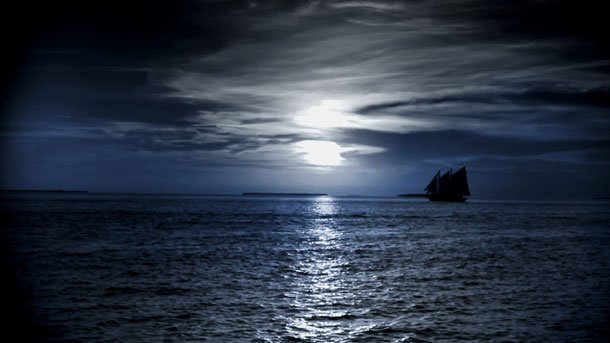In the Bulgarian mythology, the Sun is a young man, a tsar and sovereign of everything that lives in the world. It appeared at the very beginning of Creation when the sky and the earth merged. This marriage produced the Moon too interpreted ambiguously as either a brother or sister of the bright daytime luminary. The myth about the origin of the Sun and the Moon is closely related to the beliefs about the divine twins – brothers, or a brother and a sister – who created the Universe. Some of the most popular tales and legends recount that in the beginning, the Sun and the Moon shone with an equal intensity. They were inseparable. Then came the rift between them, and their parting. In some of the tales they fought bitterly and were punished never to meet again. The Moon (that was probably to blame for the conflict) was to shine with lesser intensity from then on. In another legend, the Moon fell in love with the beautiful sweetheart of his brother. Angered by his daring, their mother cursed the Moon to shine only at night.
The stories in which the Sun and the Moon are a brother and sister remind of myths common in various ancient cultures. These stories are often about incest. In one of the versions of this myth the two did not know each other and were not aware of their kinship. When they grew up, they fell in love and wished to get married. In another tale they went for incest quite voluntarily. In both cases what followed was a severe maternal curse. The result: the two sinners meet only once a year, on Eniovden (Midsummer’s Day), the day of the summer solstice. In some regions of the country people believed that many, many years ago the Sun, Moon and stars were close to the earth and shone much stronger than today. But humans started picking up a star or two to their houses to use instead of candles. Once a Gypsy was about to pick the Moon but then God lifted the Moon much higher.
Moon spots that can be seen with the naked eye would ignite the imagination of our ancestors. There are many explanations about how they appeared. One of the most amusing stories is how the Sun and the Moon saw two Gypsies making love outside their house. The brother and sister felt ashamed for them and dropped their eyes. The girl (the Moon) flushed to purple, and the images of the man and woman were imprinted on her face and could be seen even today. In another tale the spots on the Moon’s surface depict a young man with a crook and a girl with a yoke.

© Photo: archive
Many songs about the Moon represent a confession of a kind before the heavenly candle, as the Moon is also known in Bulgarian folklore. It shines far and sees the beloved folk of the traveler, the emigrant worker or the warrior in remote foreign lands.
Various mythologies across the world see the Sun as a God, a symbol of masculinity; its bright light is associated with gold. The Moon is linked to femininity, with the functions of the female system. Its metal equivalent is silver. The influence of various stages of the lunar cycle as seen in the traditional Bulgarian notions is not unlike zodiac forecasts that have flooded mass media. In folklore terminology the New Moon is News, a New Old Man or a New Candle. This is the right moment for engagements and weddings, as well as for the start of a time and effort consuming farming activity such as sowing, plowing etc. During a full moon it is advisable to enter a new home. Nothing important should get started in the period after the full moon as it is doomed to fail. In the last three days when the moon virtually disappears, washing clothes or the hair is banned.
If one sees the New Candle from the right, the whole month will go well. A little stone taken at this moment and placed under the pillow will show a girl whom she is going to marry. The new moon is the best moment to cut the hair of a young girl. In common belief, one should not look at the new moon for a long time or they risk freckles appearing on their faces. The right thing to do is to make the sign of the cross against it (men with hats off) and to touch a silver coin. In some regions there was a ritual of women lifting their children up chanting: “The way the moon gets full, let your purse get full of money!” During the first appearance of the moon girls and children held hands for a chain dance and jumped three times. This was done near a river, spring or well. The ritual dance was performed to make sure the weather would be fine throughout the month – when rain was needed, rain would fall, when sun was needed, it would be sunny.
English version Daniela Konstantinova
The Philip Koutev National School of Folk Arts is not just any school - it is a talent laboratory. It is the first school not only in Bulgaria but in the Balkans for professional study of folklore. It is located in the heart of the beautiful town of..
Scientists from the Sorbonne will study the cultural heritage preserved in the Regional Ethnographic Open-Air Museum "Etar" , informs public broadcaster BNT. In March this year the French scientists together with experts of REOM "Etar" will study elements..
The day of St. Tryphon (1 February old style, 14 February new style) is celebrated by vine growers, falconers and gardeners in Bulgaria. Trifon Zarezan comes around with vine pruning and wine drinking St. Tryphon is believed to help..

+359 2 9336 661
